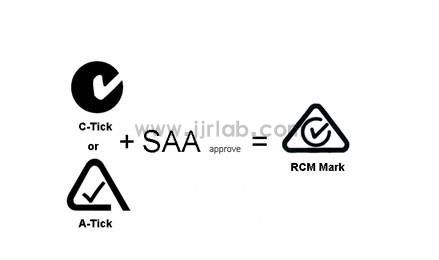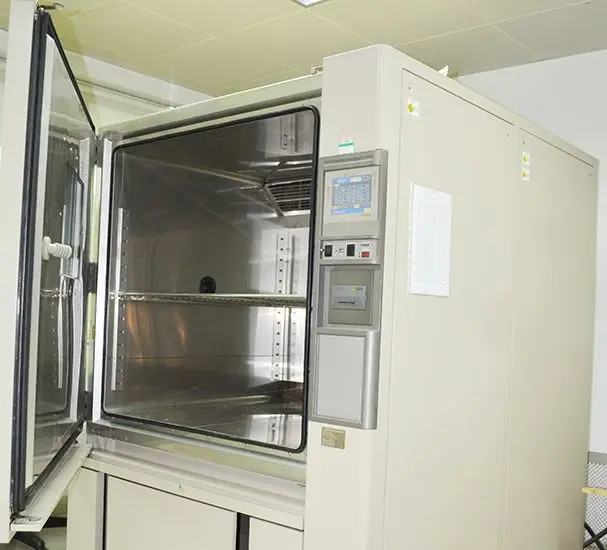
RCM Logo Australia
rcm certification is a marking introduced by Australia and New Zealand to unify the identification of electrical products. The rcm logo is a trademark owned by the regulatory bodies of both countries and indicates that a product complies with safety and EMC requirements. It is not mandatory but strongly recommended.

What is RCM Registration?
RCM stands for Regulatory Compliance Mark. It is a registration system for importers and manufacturers in Australia and New Zealand.
Since March 1, 2013, Australia has enforced a new electrical equipment safety scheme (EESS), under which the RCM is the only official compliance mark.
Only local Australian importers or their authorized agents can register products.
RCM covers both electrical safetyand EMC. SAA now offers emc certification and sdoc (Supplier Declaration of Conformity), providing all necessary documents required for the Australian market.
What Are "In-Scope Electrical Equipment"?
“In-scope electrical equipment” refers to low voltage equipment within the following rated voltage ranges:
1. Greater than 50VAC RMS or 120VDC (i.e., not Extra-Low Voltage)
2. Less than 1000VAC RMS or 1500VDC (i.e., not High Voltage)
3. Designed or marketed for household, personal, or similar use
Do All In-Scope Products Need RCM Registration?
Electrical equipment under the RCM system is divided into Level 1, Level 2, and Level 3categories.
Level 3 equipment is defined as high-risk. Detailed classifications for Levels 2 and 3 are available in AS/NZS 4417.2and may change with regulatory updates.
Currently, Level 3 products must be registeredunder the RCM system.
Once an SAA certificate is issued, the certification information is automatically imported into the RCM system, simplifying the registration process for users.
How to Obtain saa certification and RCM Registration?
(Section left blank in the original — can be expanded upon request.)
Updated RCM Standard: AS/NZS 4417.2:2012 Amendment
Enforced from January 14, 2017, the amendment reclassifies risk levels for certain electrical products.
In Australia:
New Level 3 (High Risk) Products:
1. Building wires and cables
2. Air conditioners using flammable refrigerants
3. Double-ended LED lamps (LED tubes)
Reclassified to Level 2 (Medium Risk):
1. Projectors
2. Sewing machines
New Level 2 (Medium Risk) Products:
Air conditioners using non-flammable refrigerants
> Note: These products must bear the RCM label before entering the Australian market.
In New Zealand:
New Level 2 (Medium Risk) Products:
1. Nightlights for power sockets
2. Power tools
3. ELV (extra-low voltage) luminaires
4. Hot melt glue guns
5. DC isolators for photovoltaic installations
6. Lithium-ion batteries
> Note: Lithium-ion batteries must now comply with IEC 62133.
Overview of Common Electrical Products by Risk Category and Standards
Here’s a summary in descriptive style rather than tabular form:
LED Drivers (Independent):
Level 3. Safety: AS/NZS 61347.1 & IEC 61347-2-13. EMC: CISPR 15
LED Bulbs:
Level 1. Safety: AS/NZS 62560. EMC: CISPR 15
LED Tubes (T8/T5):
Level 3. Safety: AS/NZS 60598.1 & 60598.2.1. EMC: CISPR 15
Portable LED Lamps:
Level 3. Safety: AS/NZS 60598.1 & 60598.2.4. EMC: CISPR 15
LED String Lights:
Level 3. Safety: AS/NZS 60598.1 & 60598.2.20. EMC: CISPR 15
Fixed LED Luminaires:
Level 1. Safety: AS/NZS 60598.1 & 60598.2.1. EMC: CISPR 15
LED Street Lights:
Level 1. Safety: AS/NZS 60598.1 & 60598.2.3. EMC: CISPR 15
LED Downlights (Recessed):
Level 1. Safety: AS/NZS 60598.1 & 60598.2.2. EMC: CISPR 15
External Power Supplies:
Level 3. Must comply with relevant standards such as AS/NZS 60065 or 60950.
Relationship Between SAA, C-Tick, A-Tick, and RCM
1. SAA:Governs product safety (electrical safety).
2. C-Tick:Governs EMC and RF compliance.
3. A-Tick:Covers telecommunications products.
4. RCM:Introduced in 2013, replaces both A-Tick and C-Tick.
From March 1, 2016, all electrical and electronic products sold in Australia must use the RCM logo.
RCM integrates the requirements of both SAA and C-Tick under a unified registration system.
rcm compliance FAQs
Q: What are the REAS and RECS Schemes?
A:
1. REAS(NSW): External certification scheme with a mandatory list; certificates are uploaded to the national database.
2. RECS(QLD): Covers household products; similar mandatory list to Level 3 products; certificates are uploaded to the national database.
Q: About the New RCM System
A:
1. RCM is only a mark, indicating safety and/or emc compliance.
2. There is no standalone rcm certificate.
3. Importers and manufacturers must register to use it.
4. It does not apply to commercial/industrial safety products.
5. Products not subject to electrical safety under RCM may still need the RCM logo for EMC.
6. Foreign companies do not need to register; if holding an SAA certificate, products are automatically uploaded.
7. Level 3 products require mandatory registration.
Q: EMC Requirements
A:SAA provides EMC certification and Supplier Declaration of Conformity (SDoC) documentation.
Q: Acceptable Test Reports
A:
1. Must include CNAS or equivalent accreditation mark.
2. Prepared within the accredited scope.
3. Signed by qualified personnel listed in certification documents.
4. CB reports must include valid cb certificates.
5. GS reports are no longer accepted as of November 2018.
6. Lab qualifications must match the test scope.
Q: LED Drivers
A:Treated as Level 3 products unless all connections are type Z and permanently fixed.
Q: Portable LED Lights
A:Classified as Level 3, requiring AS/NZS 60598.1 and 60598.2.4 compliance. Separate certification needed for external drivers.
Q: Power Tools
A:Classified as Level 3 in Australia.
Must comply with AS/NZS 62841. Battery-powered tools need testing per IEC 62133.
Battery packs sold separately are mandatory-certified in New Zealand.
Q: Power Supplies
A:Use the correct standard depending on the product.
AS/NZS 62368.1:2018 covers A/V, IT, and communication.
Standards 60065 and 60950 are still in use until phased out.
Q: EPODs and Controllers
A:
1. EPODs (power boards): AS/NZS 3105, 3122, and 3100 apply.
2. Controllers: Tested per applicable standards.
3. Travel adaptors must meet AS/NZS 3122 and have two pin sets.
4. All switchgear must include double-pole disconnection and comply with AS/NZS 3133 or 60669.2.1.
Q: Solar Inverters / DC Isolators
A:
1. Must be registered with CEC.
2. Certified by SAA under IEC 62109 and AS/NZS 4777.2.
3. If batteries are included, must comply with IEC standards.
4. DC isolators are Level 3 and soon to be mandatory under AS/NZS 60947.3:2018.
5. AS/NZS 5033 covers installation, not certification.
6. AS/NZS 5039 (battery storage) is still under development.
Email:hello@jjrlab.com
Write your message here and send it to us
 How to Test IP68 Rating
How to Test IP68 Rating
 Differences Between FDA and LFGB for Food Contact
Differences Between FDA and LFGB for Food Contact
 Process and Precautions for Amazon CPC Certificate
Process and Precautions for Amazon CPC Certificate
 E-mark Certification Testing Service Laboratory
E-mark Certification Testing Service Laboratory
 Amazon ISO/IEC 17025 UL Testing Service Laboratory
Amazon ISO/IEC 17025 UL Testing Service Laboratory
 How to get CE Certification for Lighting Products?
How to get CE Certification for Lighting Products?
 CE Certification Standards & Process for Elect
CE Certification Standards & Process for Elect
 Japan METI Registration & Japanese Agent Servi
Japan METI Registration & Japanese Agent Servi
Leave us a message
24-hour online customer service at any time to respond, so that you worry!




